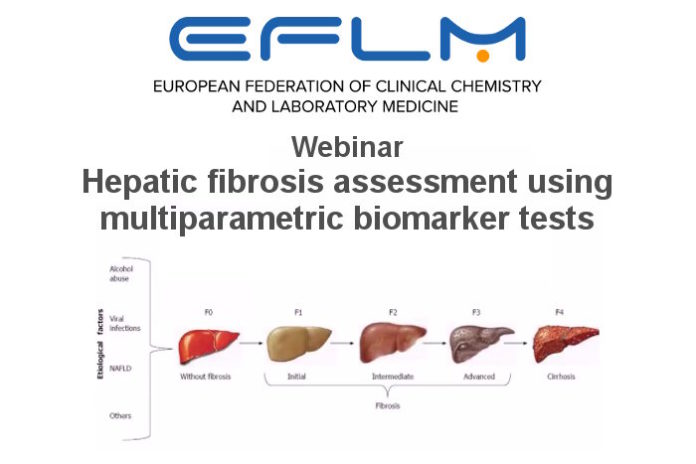An ELFM’s webinar recorded on 18th October 2017.
Speaker: Ralf Lichtinghagen (GER)
Moderator: Merve Sibel Gungoren (TR)
The stage of fibrosis is the most important single predictor of significant morbidity and mortality in chronic liver disease. The mechanisms leading to fibrosis and eventually cirrhosis are thought to be similar, irrespective of the underlying etiology. At cellular level, hepatic stellate cells (HSC) undergo a phenotypic switch usually addressed as transactivation. Activated HSC are regarded as the main source of extracellular matrix (ECM) in the fibrotic liver. Additional cell types namely fibroblasts and myofibroblasts may also contribute to ECM deposition.
Despite the similarities in pathophysiology at cellular level, morphogenesis and histologic appearance of the fibrotic liver may differ according to the etiology. Liver biopsy remains the gold standard to evaluate liver fibrosis. Not least, one has to keep in mind that liver biopsy provides additional information like histological grading and etiology that may be overlooked when surrogate markers are used.
Ideally, those tests should answer two questions:
- What is the stage of fibrotic organ damage (i.e. the amount of deposited ECM and the disturbed balance of hepatic microarchitecture)?
- What is the net balance between ECM deposition and degradation (i.e. the dynamics of ECM turnover)?
The former serves to evaluate the prognosis and indicate therapy, while the latter might be used to control the efficacy of treatment with regard to disease progression. Many different parameters including standard clinical chemistry and parameters of matrix metabolism have been evaluated.
In the last decade, markers were assembled to multiparametric scores. Here, we can distinguish scores assembled of standard clinical chemistry markers (e.g. aspartate aminotransferase-to-platelet ratio index, FibroTest, Forns’ index) from scores using circulating markers of hepatic matrix metabolism like hyaluronic acid (HA), tissue inhibitor of metalloproteinases-1 (TIMP-1), matrix metalloproteinase-2, propeptide of type III procollagen (PIIINP).
In the webinar we will learn further details about the relevant complex scores, the clinical evaluation and current practical guidelines.



















































